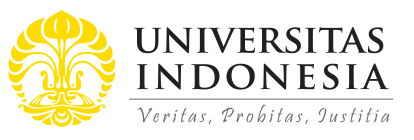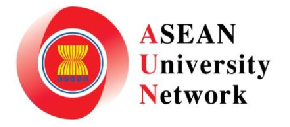
Abstract
Climate variability and change that affect extreme weather events has resulted long dry season and drought in Indonesia. Farmers become a vulnerable group since drought has damaged rice fields and as consequence losing their income. Therefore, rice farmers’ livelihood resilience needs to be enhanced in order to cope with those impacts. Crop insurance as financial capital could contribute to famers’ income stability from drought. Moreover, self-organization helps the farmers to understand agricultural risks and increase their adaptive capacity in times of extreme weather events. Accordingly, this paper investigate the impact of drought on rice production and farmers’ income, analyze the benefits of crop insurance and the support of self-organization to enhance livelihood resilience with a case of Kapetakan Sub-district in Cirebon Regency, Indonesia. The study employed mixed-methods by combining qualitative and quantitative data based on official data from government, in-depth interview, and literature review. The study reveals drought, for instance El Nino’s drought in 2015, has resulted in lower rice production and farmers’ income compared to 2014. Crop insurance could increase farmers’ income as compensation due to drought, nonetheless, there have been many farmers who do not have crop insurance yet. Moreover, self-organization related to the network capacity of farmers tends to be limited within farmer groups at village level. The government or other stakeholders should assist to expand the network of farmers in order to interact and learn with other organizations outside the region. Thus, knowledge and skills of farmers which inlude related to benefits of crop insurance and how to manage it will increase in order to choose adaptation option. This condition will contribute to enhance livelihood resilience of farmers to recover from extreme weather events.
References
Abid, M., Schneider, U. A., & Scheffran, J. (2016a). Adaptation to climate change and its impacts on food productivity and crop income: Perspectives of farmers in rural Pakistan. Journal of Rural Studies, 47, 254-266.
Abid, M., Schilling, J., Scheffran, J., & Zulfiqar, F. (2016b). Climate change vulnerability, adaptation and risk perceptions at farm level in Punjab, Pakistan. Science of the Total Environment, 547, 447-460.
BAPPENAS. (2010). Indonesia climate change sectoral roadmap: Synthesis report. Jakarta: BAPPENAS.
Bhuvaneswari, K., Geethalakshmi, V., Lakshmanan, A., Srinivasan, R., & Sekhar, N. U. (2013). The impact of El Nino/ Southern Oscillation on hydrology and rice productivity in the Cauvery Basin, India: Application of the soil and water assessment tool. Weather and Climate Extremes, 2, 39-47.
BIG. (2016). Data spasial peta IGD 25k-penutup lahan, (Spatial data map of IGD 25k-land cover). Retrieved September 28, 2016, from http://tanahair.indonesia.go.id/home/download_rbi/25k_penutuplahan.html
BMKG. (2015). Buku informasi peta kekeringan dengan metode SPI Propinsi Banten dan DKI Jakarta bulan Oktober 2015. Tangerang Selatan: Stasiun Klimatologi Pondok Betung.
BNPB. (2016a). Risiko bencana Indonesia, (Indonesia’s disaster risk). Jakarta: BNPB.
BNPB. (2016b). Kejadian bencana kekeringan di wilayah Provinsi Jawa Barat, (Drought incident in West Java Province). In Data dan Informasi Bencana Indonesia. Retrieved September 25, 2016, from http://dibi.bnpb.go.id
Boer, R. (2012). Asuransi iklim sebagai jaminan perlindungan ketahanan petani terhadap perubahan iklim, (Climate insurance as a guarantee of farmers resilience protection against climate change). Prosiding Widyakarya Nasional Pangan dan Gizi 10: Pemantapan Ketahanan Pangan dan Perbaikan Gizi Berbasis Kemandirian dan Kearifan Lokal, 14 pp.
BPS. (2014). Village Potential Statistics of Indonesia. Jakarta: BPS.
BPS Kabupaten Cirebon. (2013). Cirebon regency in figure 2013. Kabupaten Cirebon: BPS Kabupaten Cirebon.
BPS Kabupaten Cirebon. (2017). Cirebon regency in figure 2017. Kabupaten Cirebon: BPS Kabupaten Cirebon.
Brocklesby, M. A., & Fisher, E. (2003). Community development in sustainable livelihood approaches: An introduction. Community Development Journal, 38(3), 185-198.
Capa-Morocho, M., Rodríguez-Fonseca, B. & Ruiz-Ramos, M. (2014). Crop yield as a bioclimatic index of El Nino impact in Europe: Crop forecast implications. Agricultural and Forest Meteorology, 198-199, 42-52.
DFID. (1999). Sustainable livelihoods guidance sheets. London: DFID.
Dick, W. J. A., & Wang, W. (2010). Government interventions in agricultural insurance. Agriculture and Agricultural Science Procedia, 1, 4-12.
Elasha, B. O., Elhassan, N. G., Ahmed, H., & Zakieldin, S. (2005). Sustainable livelihood approach for assessing community resilience to climate change: Case studies from Sudan. AIACC Working Paper, 17.
Euler, J., & Heldt, S. (2018). From information to participation and self-organization: Visions for European river basin management. Science of the Total Environment, 621, 905-914.
Farzaneh, M., Allahyari, M. S., Damalas, C. A., Seidavi, A. (2017). Crop insurance as a risk management tool in agriculture: The case of silk farmers in northern Iran. Land Use Policy, 64, 225-232.
Heylighen, F. (2001). The science of selforganization and adaptivity. In: L. D. Kiel (Ed.) Knowledge management, organizational intelligence and learning, and complexity (pp. 253-280). Oxford: Eolss Publishers.
IPCC. (2012). Managing the risks of extreme events and disasters to advance climate change adaptation: Summary for policymakers. [Field, C.B., V. Barros, T.F. Stocker, D. Qin, D.J. Dokken, K.L. Ebi, M.D. Mastrandrea, K.J. Mach, G.-K. Plattner, S.K. Allen, M. Tignor, & P.M. Midgley (eds.)]. A Special Report of Working Groups I and II of the Intergovernmental Panel on Climate Change. Cambridge University Press, Cambridge, UK, and New York, NY, USA, pp. 1-19.
Irawan, B. (2013). Dampak El Nino dan La Nina terhadap produksi padi dan palawija. In H. Soeparno, E. Pasandaran, M. Syarwani, A. Dariah, S. M. Pasaribu, N. S. Saad (Eds.), (The impact of El Nino and La Nina on rice and palawija production). (Politik Pembangunan Pertanian Menghadapi Perubahan Iklim) (pp. 29-51). Bogor: Badan Penelitian dan Pengembangan Pertanian.
Kabar Cirebon. (2015). Dampak kekeringan kian parah, (The impact of drought is getting worse). Retrieved October 13, 2016, from http://www.kabar-cirebon.com/read/2015/08/dampak-kekeringan-kian-parah/
Ke, W., Qiao, Z., Kimura, S., & Akter, S. (2015). Is the crop insurance program effective in China? Evidence from farmers analysis in five provinces. Journal of Integrative Agriculture, 14(10): 2109–2120.
Keshavarz, M., Maleksaeidi, H., & Karami, E. (2017). Livelihood vulnerability to drought: A case of rural Iran. International Journal of Disaster Risk Reduction, 21, 223-230.
Khanal, U., Wilson, C., Hoang, V., & Lee, B. (2018). Farmers' Adaptation to Climate Change, Its Determinants and Impacts on Rice Yield in Nepal. Journal of Ecological Economics, 144, 139-147.
Khayyati, M., & Aazami, M. (2016). Drought impact assessment on rural livelihood systems in Iran. Journal of Ecological Indicators, 69, 850-858.
KLHK. (2017). SIDIK: Sistem Informasi Data Indeks Kerentanan, (SIDIK: Vulnerability Index Information System Data). Jakarta: Direktorat Adaptasi Perubahan Iklim, Direktorat Jenderal Pengendalian Perubahan Iklim, Kementerian Lingkungan Hidup dan Kehutanan.
Lunt, T., Jones, A. W., Mulhern, W. S., Lezaks, D. P. M., & Jahn, M. M. (2016). Vulnerabilities to agricultural production shocks: An extreme, plausible scenario for assessment of risk for the insurance sector. Climate Risk Management, 13, 1-9.
Marza, B., Angelescu, C., & Tindeche, C. (2015). Agricultural Insurances and Food Security: The New Climate Change Challenges. Procedia Economics and Finance, 27, 594-599.
Milestad, R. (2003). Building farm resilience: challenges and prospects for organic farming. (Dissertation) Swedish University of Agricultural Sciences Uppsala. Retrieved January 29, 2018, from http://citeseerx.ist.psu.edu/viewdoc/download?doi=10.1.1.457.255&rep=rep1&type=
Nakamura, N., Prabhakar, S.V. R. K., & Ozawa, N. (2017). Agriculture insurance in Japan: Stakeholders’ opinion on its effectiveness and ways forward. In S. V. R. K. Prabhakar, D. S. Solomon, A. Abu-Bakar, J. Cummins, J. J. Pereira, & J. M. Pulhin (Eds.), Case studies in insurance effectiveness: Some insights into costs and benefits (pp. 41-60). Bangi, Malaysia: Southeast Asia Disaster Prevention Research Institute.
Pratiwi, N. A. H., Rahmawati, Y. D., & Setiono, I. (2016). Mainstreaming gender in climate change adaptation: A case study from Cirebon, Indonesia. Asian Cities Climate Resilience Working Paper Series, 39, 50 pp.
Pratiwi, N. A. H., Rahmawati, Y. D., & Setiono, I. (2017). Gender Equality in Climate Change Adaptation: A Case of Cirebon, Indonesia. The Indonesian Journal of Planning and Development, 2(2), 74-86.
Pulhin, J. M., Grefalda, L. B., Sabino, L. L., Predo, C. D., & Prabhakar, S. V. R. K. (2017). Costs and benefits of government-supported agricultural insurance: Case studies from the Philippines. In S. V. R. K. Prabhakar, D. S. Solomon, A. Abu-Bakar, J. Cummins, J. J. Pereira, & J. M. Pulhin (Eds.), Case studies in insurance effectiveness: Some insights into costs and benefits (pp. 61-71). Bangi, Malaysia: Southeast Asia Disaster Prevention Research Institute.
Rahut, D. B., & Ali, A. (2017). Coping with climate change and its impact on productivity, income, and poverty: Evidence from the Himalayan region of Pakistan. International Journal of Disaster Risk Reduction, 24, 515-525.
Reed, M. S., Podesta, G., Fazey, I., Geeson, N., Hessel, R., Hubacek, K., Letson, D., Nainggolan, D., Prell, C., Rickenbach, M. G., Ritsema, C., Schwilch, G., Stringer, L. C. & Thomas, A. D. (2013). Combining analytical frameworks to assess livelihood vulnerability to climate change and analyse adaptation options. Ecological Economics, 94, 66-77.
Setiyanto, A., & Irawan, B. (2013). Prediksi pengaruh perubahan iklim terhadap produksi, konsumsi, dan harga komoditas pangan utama. In H. Soeparno, E. Pasandaran, M. Syarwani, A. Dariah, S. M. Pasaribu, N. S. Saad (Eds.), (Predicted effects of climate change on the production, consumption, and prices of major food commodities). Politik Pembangunan Pertanian Menghadapi Perubahan Iklim (52-80). Bogor: Badan Penelitian dan Pengembangan Pertanian.
Shah, K. U., Dulal, H. B., Johnson, C., & Baptiste, A. (2013). Understanding livelihood vulnerability to climate change: Applying the livelihood vulnerability index in Trinidad and Tobago. Geoforum, 47, 125-137.
Sihem, E. (2017). Economic and socio-cultural determinants of agricultural insurance demand across countries. Journal of the Saudi Society of Agricultural Sciences.
Solomon, D. S., Prabhakar, S. V. R. K., & Rao, G. S. (2017). Agriculture insurance in India: Stakeholder perspectives on associated costs and benefits. In S. V. R. K. Prabhakar, D. S. Solomon, A. Abu-Bakar, J. Cummins, J. J. Pereira, & J. M. Pulhin (Eds.), Case studies in insurance effectiveness: Some insights into costs and benefits (pp. 23-39). Bangi, Malaysia: Southeast Asia Disaster Prevention Research Institute.
Speranza, C. I., Wiesmann, U., & Rist, S. (2014). An indicator framework for assessing livelihood resilience in the context of social-ecological dynamics. Global Environmental Change, 28, 109-119.
Tripathi, A., & Mishra, A. K. (2017). Knowledge and passive adaptation to climate change: An example from Indian farmers. Climate Risk Management, 16, 195-207.
UNDP Indonesia. (2007). Sisi lain perubahan iklim: Mengapa Indonesia harus beradaptasi untuk melindungi rakyat miskinnya. Jakarta: UNDP Indonesia Country Office.
Utaranakorn, P., & Yasunobu, K. (2016). The mutual influence of managerial ability and social networks of farmers on participation in an organic vegetable group in Khon Kaen Province, Thailand. Kasetsart Journal of Social Sciences, 37, 127-131.
Zikra, M., Suntoyo, & Lukijanto. (2015). Climate change impacts on Indonesian coastal areas. Journal of Procedia Earth and Planetary Science, 14, 57-63.
Recommended Citation
Pratiwi, Nila; Karuniasa, Mahawan; and Suroso, Djoko
(2018).
Self-organization and crop insurance to enhance livelihood resilience: A case of rice farmers in Cirebon Regency, Indonesia.
ASEAN Journal of Community Engagement, 2(1).
Available at: https://doi.org/10.7454/ajce.v2i1.116








